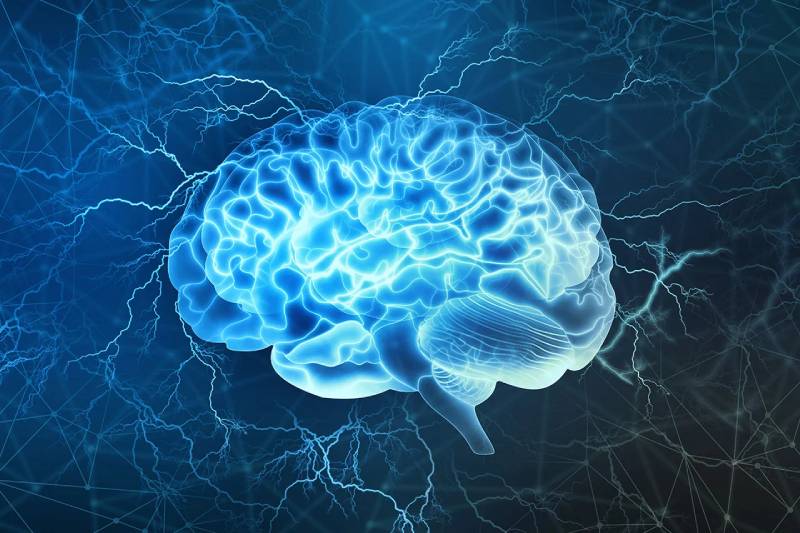In a remarkable collaborative effort led by the University of California San Diego (UCSD), researchers have delved into the intricacies of over a million human brain cells, creating intricate maps of gene switches within distinct brain cell types. This endeavor has unveiled connections between specific cell types and several prevalent neuropsychiatric disorders. The research team also devised artificial intelligence tools to forecast the potential impact of high-risk gene variants in these cells and their contributions to disease.
The BRAIN Initiative and Its Objective This pioneering research, which was presented in a special issue of Science on October 13, 2023, is a part of the National Institute of Health’s Brain Research Through Advancing Innovative Neurotechnologies Initiative, commonly known as The BRAIN Initiative, initiated in 2014. The primary goal of this initiative is to revolutionize our comprehension of the mammalian brain, primarily by developing novel neurotechnologies for characterizing neural cell types.
Understanding Cellular Disparities While every cell in the human brain carries the same DNA sequence, various cell types employ different genes in different quantities. This diversity results in the existence of numerous brain cell types, contributing to the complexity of neural circuits. Gaining insights into the molecular distinctions among these cell types is vital for comprehending brain functionality and for developing innovative approaches to address neuropsychiatric disorders.
The Intricacy of the Human Brain “The human brain isn’t uniform,” emphasized senior author Bing Ren, PhD, a professor at UC San Diego School of Medicine. “It’s a highly intricate network of neurons and non-neuronal cells, each with distinct functions. Charting the diversity of brain cells and deciphering their collaborative functioning will ultimately pave the way for the discovery of therapies targeting specific cell types relevant to distinct diseases.”
Key Discoveries from the Research In this recent study, the research team scrutinized more than 1.1 million brain cells from three human brains, encompassing 42 distinct brain regions. They identified a staggering 107 different subtypes of brain cells and managed to correlate their molecular characteristics with a broad spectrum of neuropsychiatric conditions, including schizophrenia, bipolar disorder, Alzheimer’s disease, and major depression. Subsequently, they harnessed this data to construct machine-learning models capable of predicting how specific DNA sequence variations can influence gene regulation and disease development.
Continued Research and Future Initiatives Although these new findings provide profound insights into the human brain and its pathologies, scientists recognize that their journey to map the brain is far from over. In 2022, UC San Diego, alongside the Salk Institute and other partners, initiated a Center for Multiomic Human Brain Cell Atlas, aiming to scrutinize cells from over a dozen human brains. The focus is on unraveling how the brain evolves during development, across an individual’s lifespan, and in response to diseases.
“Expanding our work to an even finer level of detail on a larger number of brains will bring us a step closer to understanding the biology of neuropsychiatric disorders and how they can be treated,” Ren affirmed.
Reference: “A comparative atlas of single-cell chromatin accessibility in the human brain” by Yang Eric Li, Sebastian Preissl, Michael Miller, Nicholas D. Johnson, Zihan Wang, Henry Jiao, Chenxu Zhu, Zhaoning Wang, Yang Xie, Olivier Poirion, Colin Kern, Antonio Pinto-Duarte, Wei Tian, Kimberly Siletti, Nora Emerson, Julia Osteen, Jacinta Lucero, Lin Lin, Qian Yang, Quan Zhu, Nathan Zemke, Sarah Espinoza, Anna Marie Yanny, Julie Nyhus, Nick Dee, Tamara Casper, Nadiya Shapovalova, Daniel Hirschstein, Rebecca D. Hodge, Sten Linnarsson, Trygve Bakken, Boaz Levi, C. Dirk Keene, Jingbo Shang, Ed Lein, Allen Wang, M. Margarita Behrens, Joseph R. Ecker and Bing Ren, 13 October 2023, Science.
Co-authors of the study include: Yang Eric Li, Sebastian Preissl, Michael Miller, Zihan Wang, Henry Jiao, Chenxu Zhu, Zhaoning Wang, Yang Xie, Olivier Poirion, Colin Kern, Lin Lin, Qian Yang, Quan Zhu, Nathan Zemke, Sarah Espinoza, Jingbo Shang and Allen Wang at UC San Diego, Nicholas D. Johnson Antonio Pinto-Duarte, Wei Tian Nora Emerson, Julia Osteen, Jacinta Lucero, M. Margarita Behrens and Joseph R. Ecker at the Salk Institute for Biological Studies, Kimberly Silett and Sten Linnarsson at Karolinksa Institute Anna Marie Yanny, Julie Nyhus, Nick Dee, Tamara Casper, Nadiya Shapovalova, Daniel Hirschstein, Rebecca D. Hodge Trygve Bakken, Boaz Levi and Ed Lein at Allen Institute of Brain Science and C. Dirk Keene at University of Washington Seattle.
The study was supported by the National Institutes of Health (grants UM1MH130994, U01MH114812, U54HG012510 and S10 OD026929), the National Science Foundation (grant OIA-2040727); the Nancy and Buster Alford Endowment, the Life Sciences Research Foundation, as well as gifts from Google, Adobe and Teradata.
Disclaimer: The views, suggestions, and opinions expressed here are the sole responsibility of the experts. No Dive Digest journalist was involved in the writing and production of this article.

